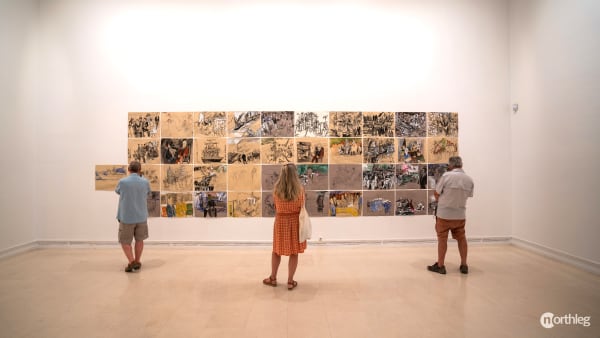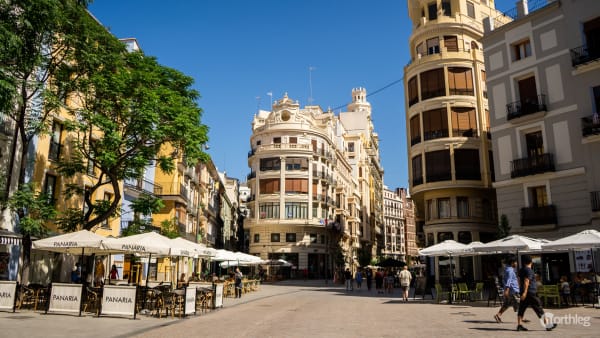Curiosities
Curiosities
In this section you can find out more about the divisive bullfighting tradition, its different events, as well as how to tell if there’s an event going on inside the Plaza de Toros.
The flags
If you’re ever wondering whether there’s an ongoing event in Valencia’s bullring, there are a few ways to find out. Of course, you can just ask someone or look it up on the internet, but there is a much more immediate way to do it. That is if you know what to look for. All you have to do is look at the flags at the top of the Plaça de Bous.
If you see all the flags on their masts, there is a corrida de toros going on (with fully grown bulls, which weigh more than 500 kg, around 1,100 pounds).

If there are flags only on every other flagpole, it is a novillada (a bullfight where the bullfighter has not officially become a matador and the bull is still young, between two and three years of age). If there are flags on every third flagpole, it is a becerrada (a bullfight with a very young bull, no older than two, and non-professional participants).
Types of bullfighting
Bullfighting is a tradition practised in various countries, most notably in Spain. However, there is more than one type of bullfighting style and certainly more than one bull-related type of activity in Spain.
Corrida de toros
The event you’ll probably think about when hearing the word is what in Spain is known as corrida de toros (or simply corrida). This is highly standardised performative art, with distinct phases and participants, each playing a well-defined role.
In each of the three parts of the event, which takes place inside a bullring, the toreros (trained bullfighters) follow a practised routine. A set of norms, rules, and traditions must be respected. At the end of the third act, the bull is killed among the applause and cheering of the audience.
Novillada and becerrada
These other two events, unlike the others that we will see in the next paragraphs, are still practised in a bullring. To varying degrees, they can also be similar to regular corrida.
The novillada is still highly standardised and regulated, as the matador, although not officially registered, is still a trained professional. The bull, however, is younger and thus smaller than in a regular corrida.
The becerrada, on the other hand, only uses extremely young bulls, generally less than two years old. This is an event where even non-professionals can take part (and they often do).
Encierro
Another event you might have heard of is the encierro, the running of the bulls. This is a tradition that usually takes place during summertime festivals, where a part of the town is sectioned-off and a group of bulls are let loose together with tens of volunteer runners.
The run usually ends with the bulls entering the bullring, where they will later participate in a corrida. The most well-known of these events is the San Fermín Festival, in Pamplona. In the city of Valencia there is no such event, but there are corridas taking place in the Plaza de Toros.
Recortes and Toro Embolado
Other events still are recortes, a much less stylised and standardised practice than the corrida, where men perform acrobatic bull-leaping inside the arena, and toro embolado (bull with balls, in English).
The latter is very similar to the encierro, except that it is celebrated at night, and the bulls that are set free in the streets have flammable material attached to their horns.
Bullfighters
Bullfighting is certainly one of the most controversial performances in Spain. For supporters of animal rights, it is a cruel and barbaric tradition, where an unknowing animal is tortured and killed for the enjoyment of a crowd.
But for the aficionados, it is a feverishly admired tradition, an elevated art form. In older times, the passion aroused by bullfighting events was so great that it could be compared to modern-day big-scale football events.
The bullfighters, and especially the matadors (the ones who will kill the bull), have always been highly regarded figures in Spanish tradition, to the point of being considered celebrities. Stories are told of how people would even pawn their clothes to be able to see acclaimed bullfighters, such as Frascuelo.
Nowadays, if a little less popular, these figures are still highly regarded. In fact, in Valencia, you’ll find that fans and institutions have wanted to pay tribute to their idols through statues in the likeness of the bullfighters who died in the ring.
The bronze statue that you can see by Valencia’s bullring ticket office is in honour of Manolo Montoliu, regarded as one of the best bullfighters in history.















